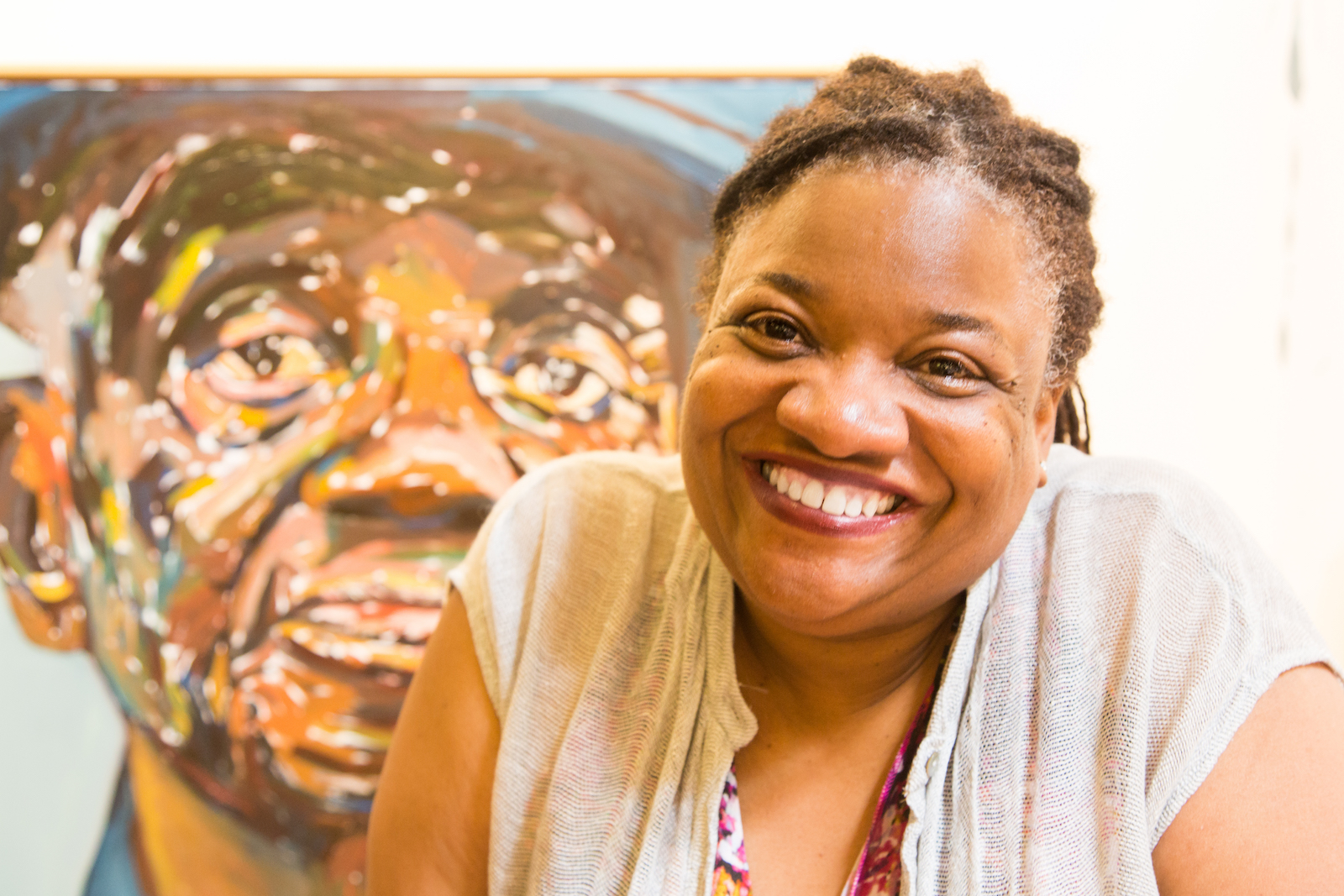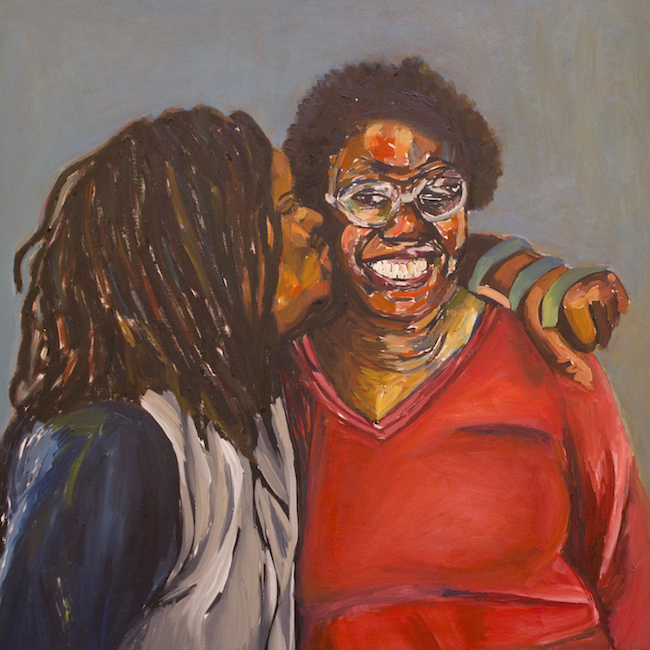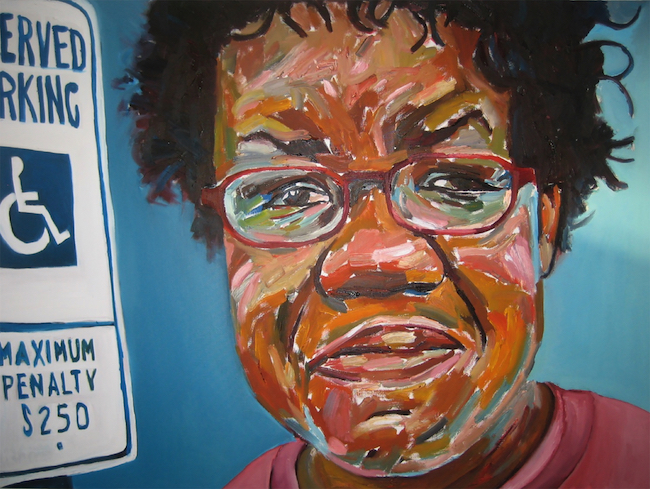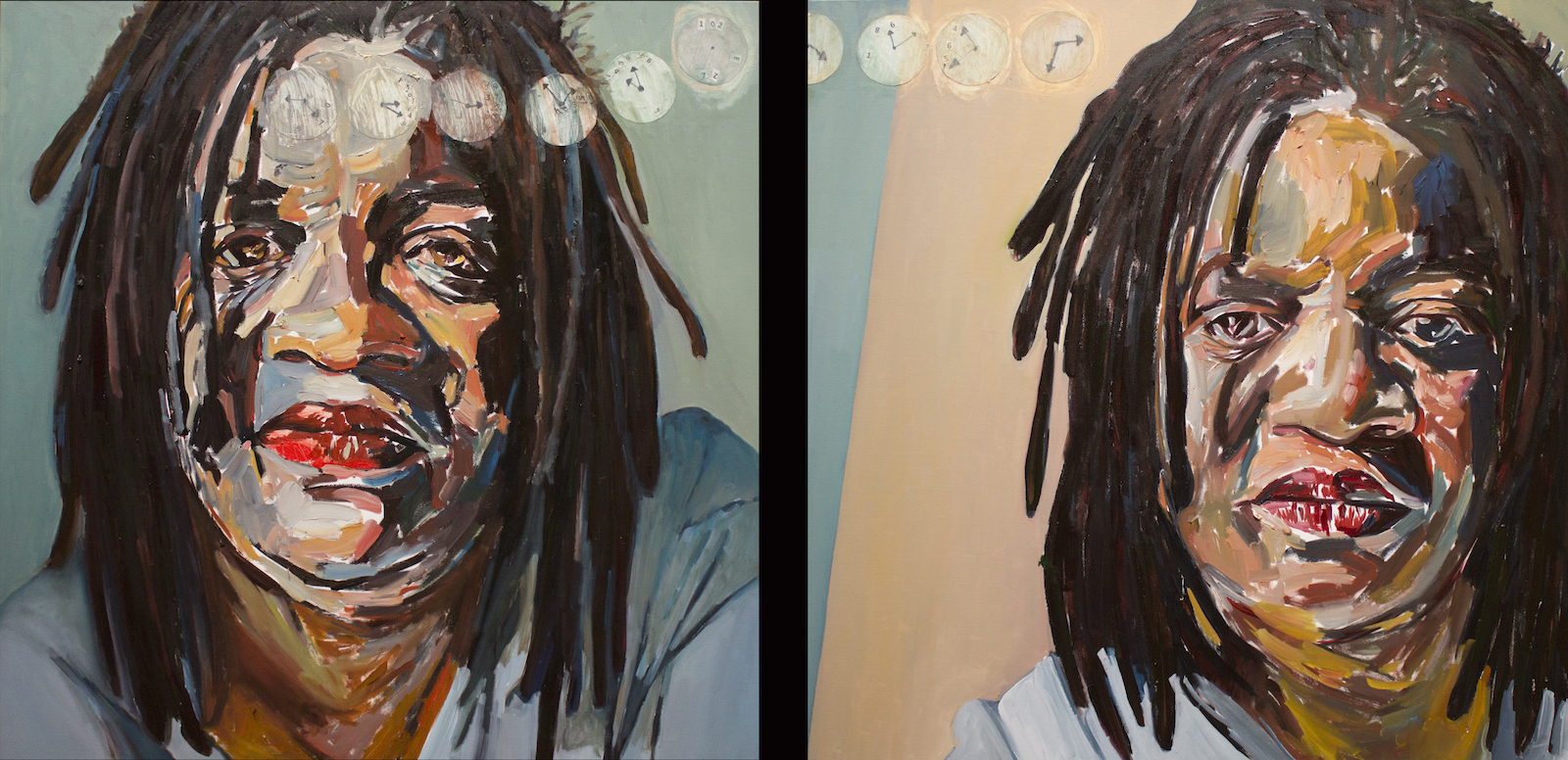This feature is part of a series collaboration with the “50 for 50” project, an initiative of the North Carolina Arts Council in celebration of their 50th anniversary.
Beverly McIver is an acclaimed contemporary visual artist from Greensboro, North Carolina. She received the Rome Prize Fellowship in 2017, and is currently on sabbatical from her position as the Ebenshade Professor of the Practice in Studio Arts at Duke University.
I didn’t start painting until my second year at North Carolina Central University [when] I took a painting class as an elective. I had a great teacher there, Elizabeth, and she believed in me in a really nice way. She told me, “You can do this. You have talent. You can make a living as an artist.” That was the first time I had ever heard that because [of] the stereotype [that] artists are poor. I totally didn’t want to be poor because I had come from poverty and wasn’t interested in repeating that. I grew up in Greensboro, and I started school when they were doing desegregation, so I was bussed K–12 to predominantly white schools across town from the housing project. What happens is you get this duality where you live in the projects and everybody’s poor and struggling, and then you go across town and everything’s nice and clean and plentiful and white . . . very white. You get in your head that there is a real divide between the haves and the have-nots, and in my case black people and white people. Having Elizabeth believe in me and say if I worked really hard at painting then I could be good at it. So I started painting, and I’ve been painting ever since.
I started painting, and I’ve been painting ever since.

I learned how to paint by painting still lifes: lemons, apples, oranges, bottles. That’s how I learned about color theory and scene and composition. And then ironically—I’ll never forget this experience I consider it, sort of a breakthrough in my art career—I started making paintings of my sister Renee [after] I started having dreams about how violent she was when we were growing up as children. She is 57 years old but she has the mindset of a third grader, and she has epilepsy. She would throw me down the steps or hit me. My mother would always say, “She can’t help it, and you shouldn’t hit her back.” I was out of school at the time, and I was terrified. I was feeling really angry and sad and guilty, but my teacher Elizabeth was like, “Just keep painting them. Just keep making them.” So that’s what I did. I ruined several brushes. Made maybe fifteen paintings about what it was like to grow up with Renee and be in Renee’s shadow. Once I had let that voice come through, the voice that guides me and tells me what to paint next has just gotten stronger and stronger over the years. Now I listen to it and I don’t feel like I have too much of a say in what comes up. It just comes out.
Once I had let that voice come through, the voice that guides me and tells me what to paint next has just gotten stronger and stronger over the years.

It’s important to do your work and not let naysayers, or people in the community, or your gallery dealer, or whoever, influence what your intuition is telling you [to] be painting. If I painted flowers or something more aesthetically pleasing, I could probably make more money but it would not make it possible, perhaps, for me to get the Guggenheim Award or the Rome Prize because they want very strong conceptual ideas about things that are happening in the world. The work is first.
North Carolina has done a really good job of supporting artists over the year. There used to be a residency at the Headlands Center for the Arts where the North Carolina Arts Council would send two artists to Sausalito, California, for three months to paint. I was fortunate enough to get that and it was fantastic. One of my favorite artists is Richard Diebenkorn, and I was able to see and understand that work so much better at a time when I was just learning and experimenting about paint color and overlay by going to Northern California where he mostly painted. There was a project grant that I received from the North Carolina Arts Council. There was a Fellowship Grant that I received. When I got the grant, it was such an honor and a confirmation for me about my skills as an artist, about my voice as an artist, and [about] how important it was that I was saying something that was fairly personal but universal at the same time. Those programs, those experiences really, really changed my life.

Really it’s the arts that make a city.
Really, it’s the arts that make a city. How lovely it would be if North Carolina could support artists more by providing cheaper housing for artists, by creating studio spaces that are affordable. Imagine if we had more gallery spaces that actually showed and sold artist’s work, and [more] programs to teach artists the business so they can be sustainable. It would just be lovely to have that kind of support.


